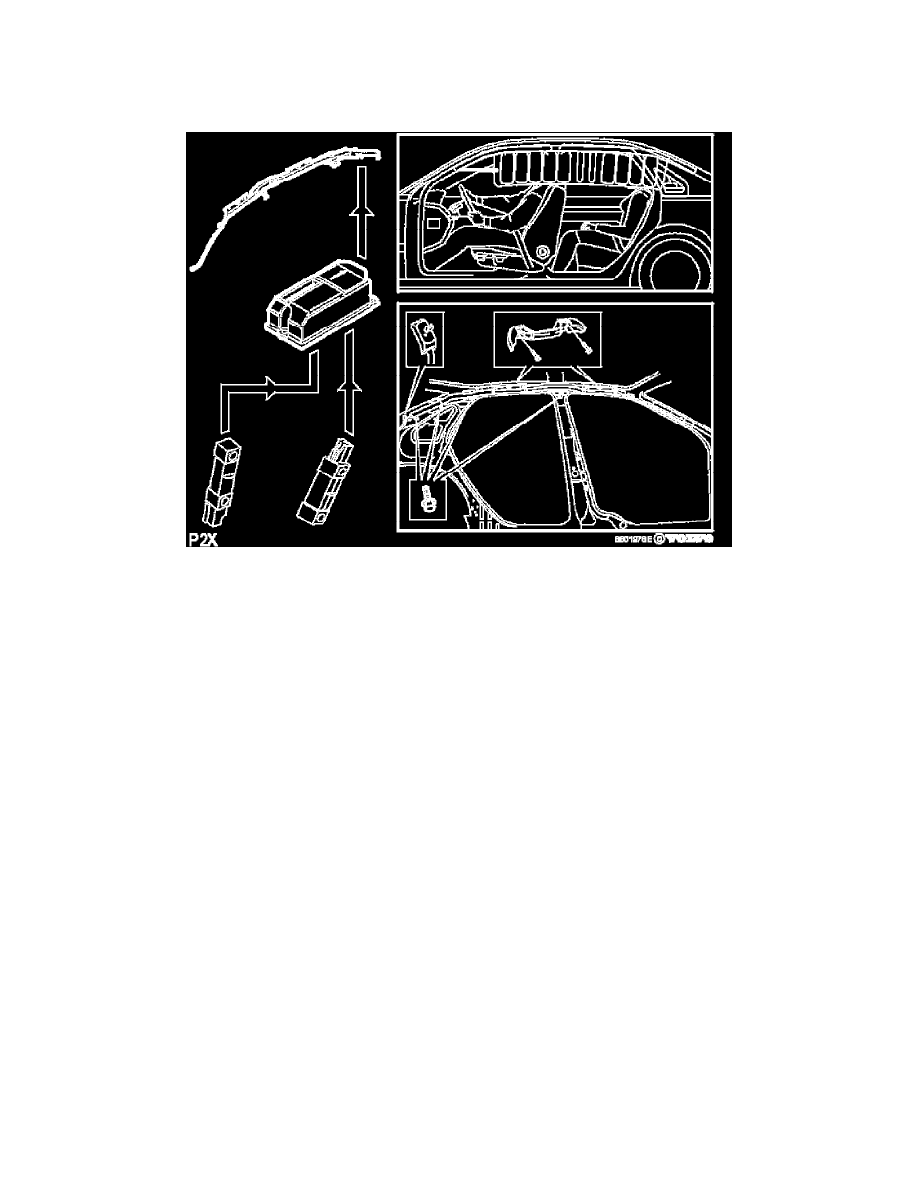V70 2.4T L5-2.4L Turbo VIN 58 B5244T3 (2002)

Side Air Bag: Description and Operation
Introducing the Inflatable Curtain (IC)
Introducing The Inflatable Curtain (IC)
Inflatable Curtain (IC)
The inflatable curtain (IC) is standard in all markets.
The curtain reduces the risk of head injuries to both front and rear seat occupants in the event of both side impact and multi-point impact (when the car is
subjected to different types of impact). The curtain protects occupants from:
-
hitting their heads on the car interior.
-
hitting their heads on something the car has collided with, for example a post.
-
heads being forced out of the side windows.
The curtain consists of two inflatable protective curtains located in the edges of the roof on each side of the car. The curtain shields the upper section of
the car interior, from the A to the C-posts.
The curtain is manufactured using "one piece woven technology" - this means that the curtain is woven in one piece with channels in predetermined
places.
In non-deployed position, the curtain is packed in a zigzag shape inside a plastic casing which in turn is located inside the car's headlining.
The gas cartridge for curtain deployment is located in the roof at the C-posts. The gas consists of a mixture of Argon (95%) and Helium (5%). During
inflation, a pyrotechnic charge (3 g of powder) is used to heat and thereby expand the gas mixture.
Helium is only used to be able to carry out leak tracing on the curtain during manufacture.
The curtain deploys and is inflated to full capacity in approximately 25 ms. In the edges between the different channels there are small outlets for the gas.
The outlets are shaped so that the curtain empties slowly. This takes approximately 3 seconds. This gives occupants protection over a longer period of
time, during for example multiple collisions or if the car overturns.
When fully inflated, the thickness of the curtain is approximately 70 mm (2.76 in).
The carefully controlled release means that occupant's heads are protected in the best possible way. The curtain can absorb up to 75% of the energy
generated at impact.
In the headlining is a device that folds the corners of the headlining out of the way during deployment of the curtain.
